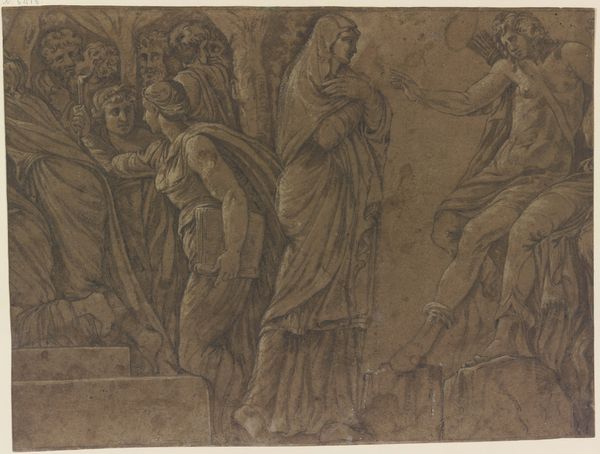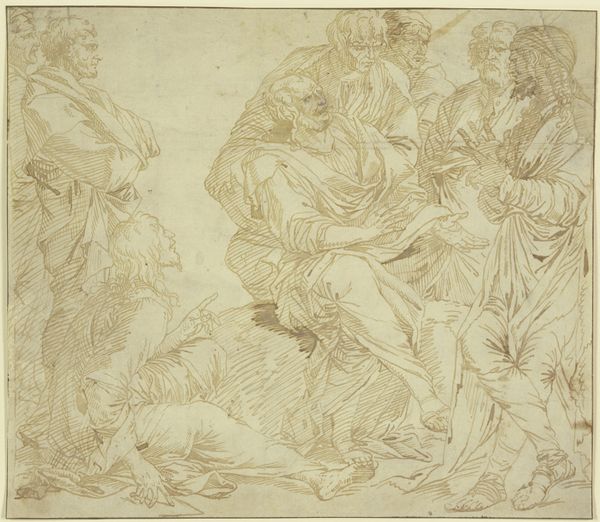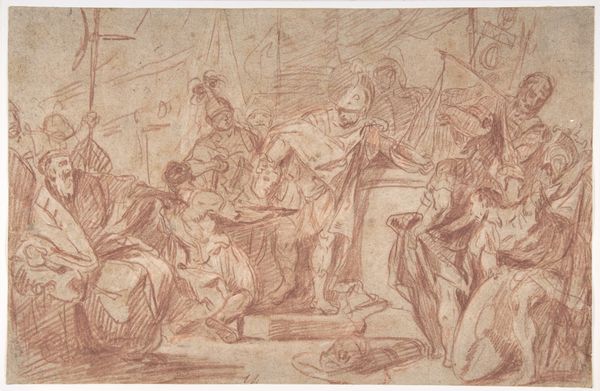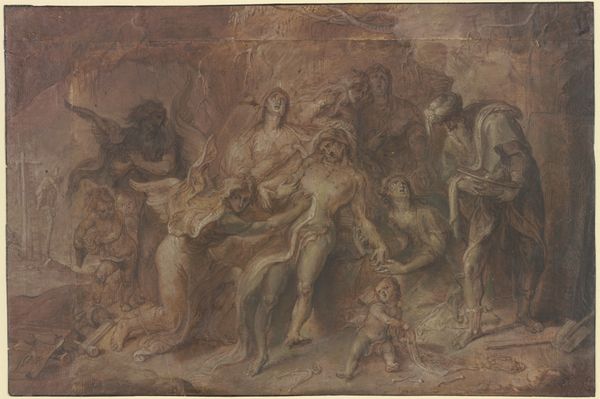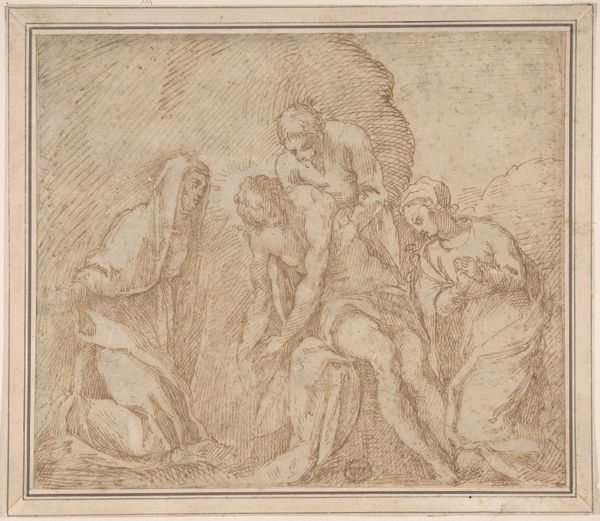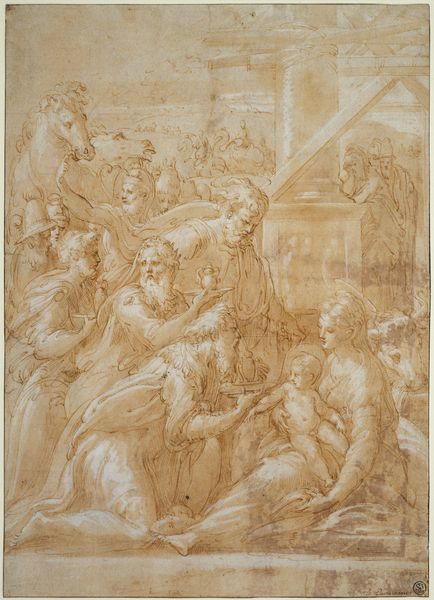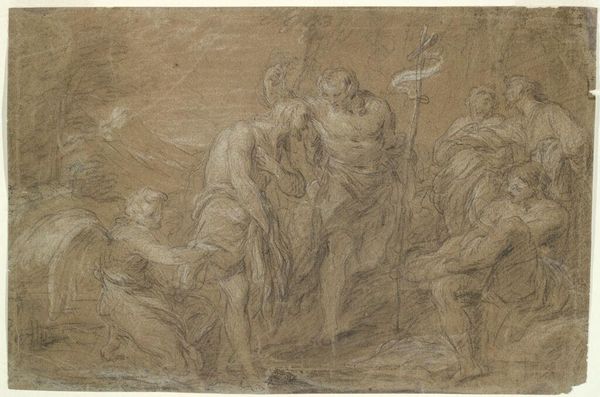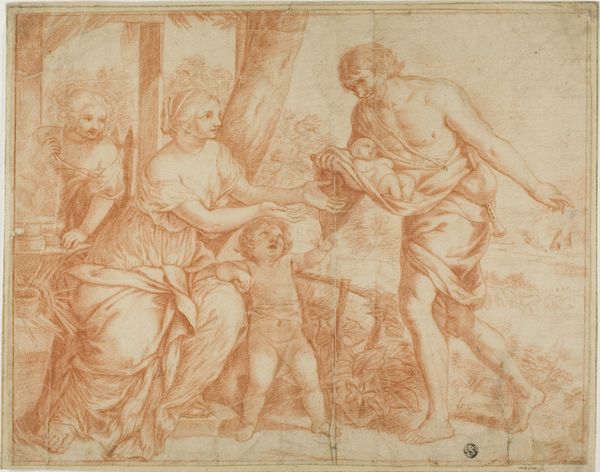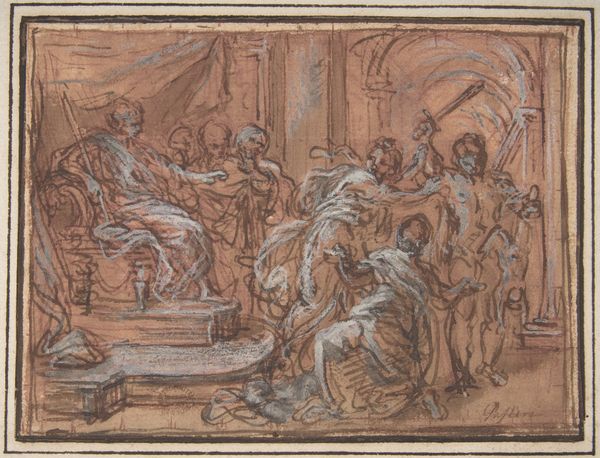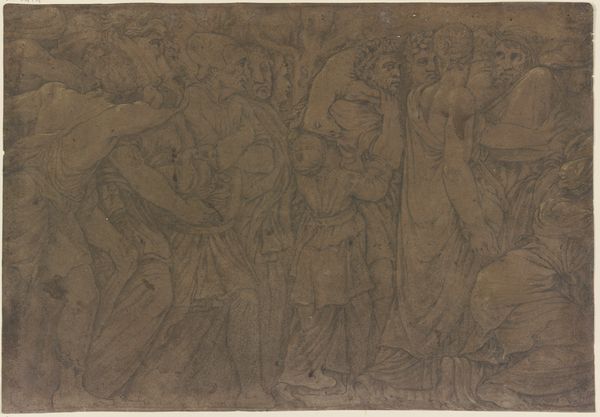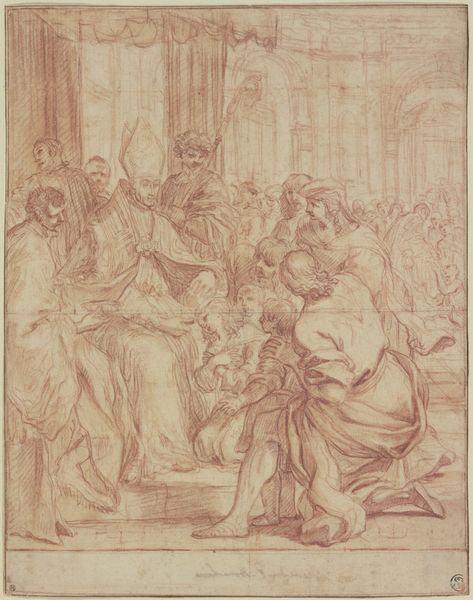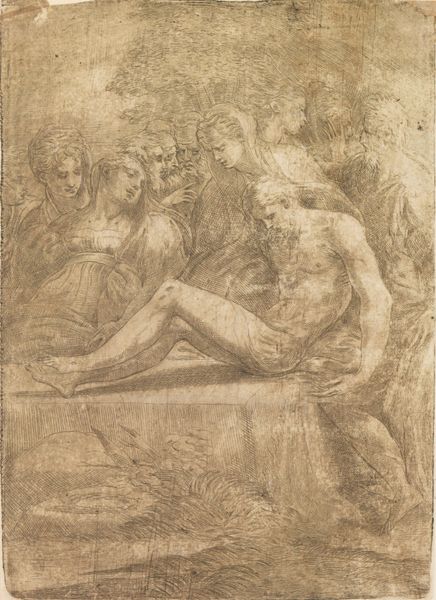
Der verlorene Niobidenfries an der Fassade des Palazzo Milesi in Rom 1656
0:00
0:00
drawing, paper, ink
#
drawing
#
high-renaissance
#
baroque
#
ink painting
#
figuration
#
paper
#
ink
#
14_17th-century
#
history-painting
Copyright: Public Domain
Editor: This is "Der verlorene Niobidenfries an der Fassade des Palazzo Milesi in Rom," a drawing in ink on paper by Polidoro da Caravaggio from 1656. The figures, with their grief, and the rather brutal clarity of line give it a powerful emotional impact. What narratives do you see unfolding here? Curator: Well, considering Caravaggio's political and social context, this drawing of the Niobid frieze isn’t just an exercise in High Renaissance and Baroque styles. It speaks volumes about power, hubris, and consequence. The myth of Niobe, whose children were slain by Apollo and Artemis after she boasted of her fertility, is a potent narrative about challenging divine authority. Editor: So, you're saying it's more than just a historical scene; it's a commentary? Curator: Absolutely! Think about it: 17th-century Rome was a place of immense papal power, where artistic patronage was closely tied to religious and political agendas. Caravaggio, known for his, shall we say, 'spirited' personality, might have used this classical subject to subtly critique the authority structures of his time. The rendering of grief, the stark portrayal of violence… These can be read as coded expressions of resistance. Do you notice how the figures are positioned, almost as if crushed by forces outside of their control? Editor: Yes, there is something unsettling about how the group almost folds in on itself... like no one is safe. So, are we looking at an early form of visual protest? Curator: Perhaps. It encourages us to examine whose stories are being told, whose voices are being amplified, and whose are being silenced. How does this "historical" narrative resonate with contemporary struggles against oppression, erasure, and injustice? Editor: I never considered that the choice of subject matter itself could be a form of activism. Curator: It always is. Considering art in connection to historical and cultural forces adds new and rich dimensions. Editor: Thanks. I'll certainly keep that in mind moving forward!
Comments
No comments
Be the first to comment and join the conversation on the ultimate creative platform.
